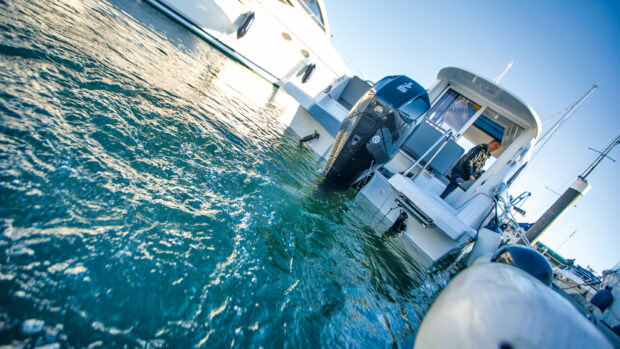Learning how to drive a boat in rough water takes practice, a fair amount of getting it wrong and sometimes very wet clothing. Jon Mendez explains...
Make no mistake, the person who has never got it wrong off a wave has never been out on a really rough day!
The skill comes from knowing what to do and by reading the waves well ahead of the one you are on – not easy if you can barely see over the next one.
There are a couple of simple steps to follow; firstly, think about the boat’s trim angle as it encounters each wave – if the bow is dropping then add a touch more power to lift it. Likewise, if the bow is rising then consider easing the power so you don’t fly off the top of it.
Secondly, never travel too fast as at some point you may need more power to lift the bow and if there is no throttle left it can go horribly wrong.
The direction of travel also affects how you deal with the waves. Waves tend to be less intimidating downwind when you are riding on the backs of them rather than climbing the faces.
Article continues below…

How to throttle and trim an outboard engined boat

How to make fast turns in a boat: S turns and U turns explained
The technique here is to sit on the back of the wave, letting the wave’s speed dictate your progress, then, as it starts to dissipate, power up to drive onto the back of the next one.
However, it can also be the most risky. Go too late and the breaking crest of the wave can cause you to lose drive as the propeller struggles for grip in the frothy white foam, leaving you to get swamped by the next breaker.
Go too early and you risk punching through the wave with spectacular results but a very wet boat. In both cases you may need to ease the power just enough to regain drive.
How to drive a boat upwind in rough water
Upwind is generally hardest. Here you need to drive every wave as an individual crest – the key is to avoid shooting off the top and landing heavily in the trough beyond.
Generally, the larger the wave, the deeper the trough behind it, so it’s crucial to ease the power before the top so that you lose momentum as you come over the crest.
Then, as the bow starts to drop, power up again to lift it ready for the next one. Beam seas can offer the best opportunity to make good progress by picking your way through the flatter water between each wave set.
The key is looking upwind to see what’s coming then deciding how to deal with each wave. The first option is to turn upwind and ease over the crest.
The second is to turn slightly downwind to outrun it, then come back onto your course. The final option is to ease the power and let the wave pass in front of you.
With practice, it’s possible to make good progress in all three conditions. However, the defining factor will always be the capabilities of your boat and crew.











